Sora radish: variety description, planting and care
Sora radish is rightfully considered a leader among many other varieties. It earned its popularity among summer residents due to its early ripening, high quality fruits, resistance to adverse weather and diseases. Sora belongs to the group of hybrids and is versatile. Radishes can be grown both indoors and outdoors.
Description, characteristics, advantages of the variety
The Sora radish variety is resistant to light frosts, which makes it possible to grow it from early spring to mid-autumn. At the same time, the culture tolerates high temperatures well, without forming an arrow, increasing full-fledged fruits.
To provide your table with fresh radishes for the whole season, sowing the Sora hybrid is carried out at intervals of 2 weeks. The variety was bred in Holland, but already in the early 2000s it was recommended for planting in Russia and included in the State Register. Radish is so unpretentious that it is suitable for growing on an industrial scale. Owners of small private farmsteads willingly plant it.
Sora has a compact leaf rosette. Gray-green leaves are ovoid and slightly pubescent. The fruits ripen in 23-25 days from the moment the first shoots appear. In order for the radish to be larger, it can be left in the ground for another 5-10 days, the taste of the vegetable does not deteriorate.
Description of root vegetables:
- average weight - 20 g;
- shape - rounded;
- the skin is scarlet;
- the pulp is tender, juicy;
- the taste is sweet, with a slight pungency.
Summer residents appreciate the hybrid for its yield, unpretentious care, resistance to diseases (especially to mucous bacteriosis and downy mildew), versatility. The culture is not prone to shooting and grows well regardless of the length of daylight hours.
Even if the roots are overexposed in the ground, voids are not formed inside the radish, the pulp does not become tough. The vegetable is stored for a long time in cool conditions and easily tolerates transportation. The small weight of the fruit can be considered a relative disadvantage.
Features of growing in different conditions
In the open field, the Sora hybrid can be grown as soon as a positive average daily temperature is established. In the conditions of the Moscow region, sowing is usually carried out already in early April. The germination time of seeds directly depends on weather conditions.
In case of unexpected frosts, this period can last for several weeks; in warm weather, seedlings appear in 5-6 days. After pecking the shoots, it is customary to cover the culture with non-woven material - this measure will help protect young shoots from sub-zero temperatures and cruciferous flea beetles.
Using a greenhouse allows you to extend the period of growing radishes. In spring, sowing in greenhouse conditions is carried out a month earlier than in open ground, and you can harvest radishes in autumn a month later. In the greenhouse cultivation method, special attention is paid to maintaining the required temperature and soil moisture level.
In the first 2 weeks after the emergence of radish shoots, there are rather low above-zero temperatures and moderate watering; in the future, the culture will require more heat and moisture.
Some people try to grow this hybrid at home on a windowsill. This is possible, but the yield will be minimal, so planting Sora radish in an apartment does not make much sense.
Seed and soil preparation, sowing
Seeds in industrial packaging do not require preliminary preparation, they went through all the necessary stages in production.If the seed is purchased on the market, it must be processed to increase the percentage of similarity and for the purpose of disinfection. It will be enough to keep the seeds in hot water with the addition of a few crystals of potassium permanganate for 15 minutes.
The garden bed is laid out in a well-lit area. Most crops are suitable as predecessors of radish, with the exception of representatives of the cruciferous family (radish, turnip, all types of cabbage). The earth is pre-dug up and loosened. When digging, fertilizer should be added. The culture does not tolerate fresh organic matter. Humus (4-5 kg / sq. M), superphosphate (20 g / sq. M), potassium sulfate (20 g / sq. M) are added to the soil.
In summer, in hot weather, during sowing, it is necessary to ensure that a stable level of soil moisture is maintained. As a result of even short-term drought, seeds can dry out and not germinate. Sowing is carried out according to the scheme 5x5 in continuous rows or using the belt method, when radishes are sown in two rows with an interval of 5 cm between seeds and furrows, and then leave a row spacing of 10-15 cm. With belt planting, it will be more convenient to weed the bed.
Put one seed in each hole. It is advisable to pre-sort the seeds by size - this will ensure the appearance of friendly shoots. The seeding depth is 1–1.5 cm. If the depth is deep, germination is difficult. Even if the seeds hatch, the roots will have a curved shape.
Planting care, harvesting
Sora radish seeds have almost one hundred percent similarity, so it is recommended to plant them strictly according to the scheme. In this case, you will not have to thin out the seedlings. The soil should always be kept moist, the soil should be moistened to a depth of 15 cm.
After watering, the soil must be loosened to prevent the appearance of a hard crust. For the normal development of root crops, air circulation is necessary. Weeds are weeded at the same time. Radish does not need feeding, as it has a short growing season. In addition, the soil is fertilized before planting.
Pest control
If you follow simple agricultural techniques, you will not have to face radish diseases, but pests can annoy him. Especially often the culture is affected by the cruciferous flea. Insects attack radishes in the first 2 weeks after emergence, when the leaves are especially tender. The presence of a pest can be recognized by the appearance of many holes on the leaves.
A shelter will help prevent an attack by a cruciferous flea. Lutrasil is harvested at a time when roots begin to form.
To repel pests, you can dust the radish leaves with a mixture of ash and tobacco dust. For the same purpose, use plant infusions based on celandine, dandelion, tobacco, tomato tops (3-4 kg of raw materials per 10 liters of water, boil and leave for 4-5 hours).
Harvesting and storage of crops
In less than a month, the radish will ripen. Root crops give a friendly harvest, they can be harvested in a few days and immediately sowed the garden bed again. To get a larger radish, you can hold it in the ground for some time, the commercial quality of the fruit will not suffer from this. Harvested in the morning or evening hours in dry weather.
For storage, it is better to use wooden boxes with openings for unobstructed air passage. The tops are cut from root crops and laid in even layers, shifting with thick paper. It is better to store the harvested crop in a basement at a temperature of 4–6 ° C. The storage is pre-cleaned, and the walls are treated with a solution of lime. In such conditions, radishes can be stored for up to 1.5 months.
Sora radish is quite suitable for growing beginners. It is also recommended to pay attention to this variety for those who have not yet managed to "make friends" with radishes. Plant care is minimal, yields are excellent, problems arise only when agricultural technology is violated.
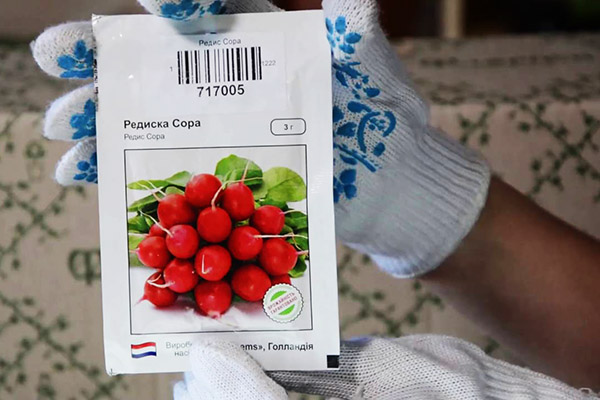
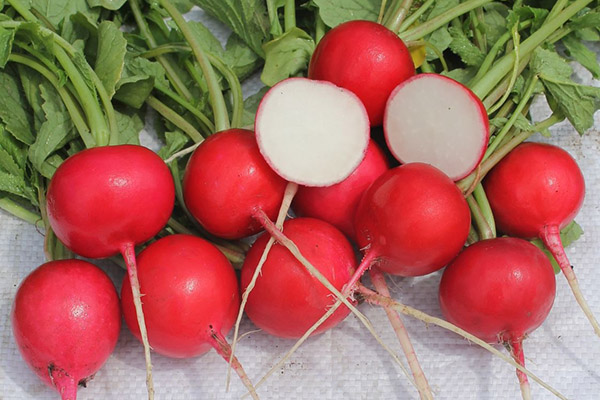

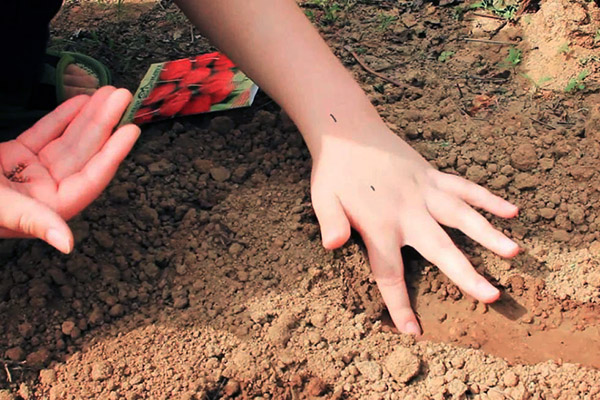
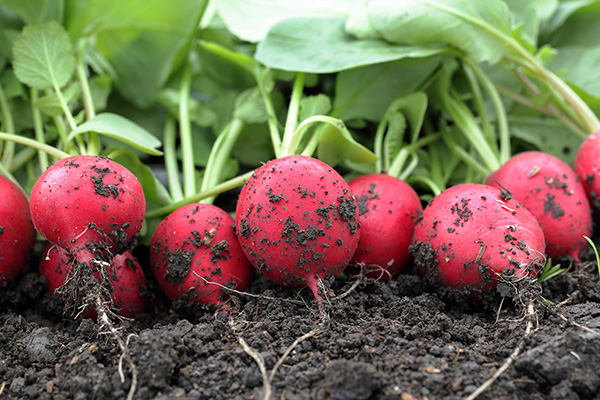

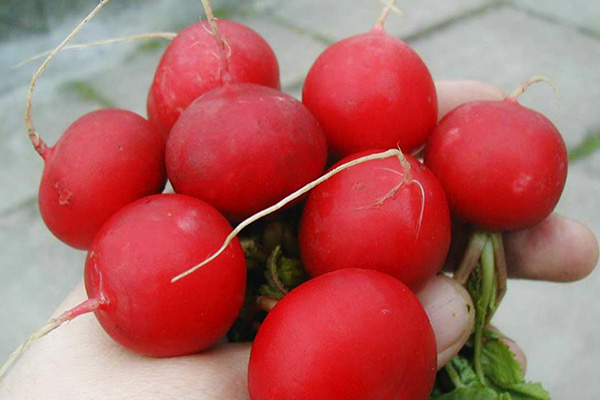

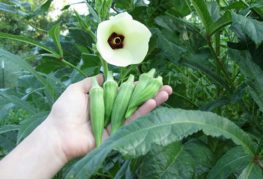
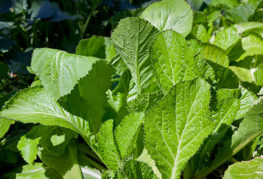
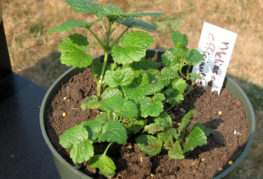
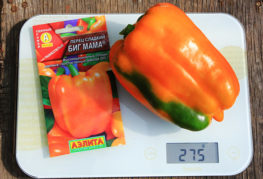
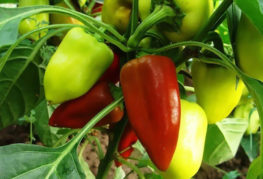
and will be published shortly.